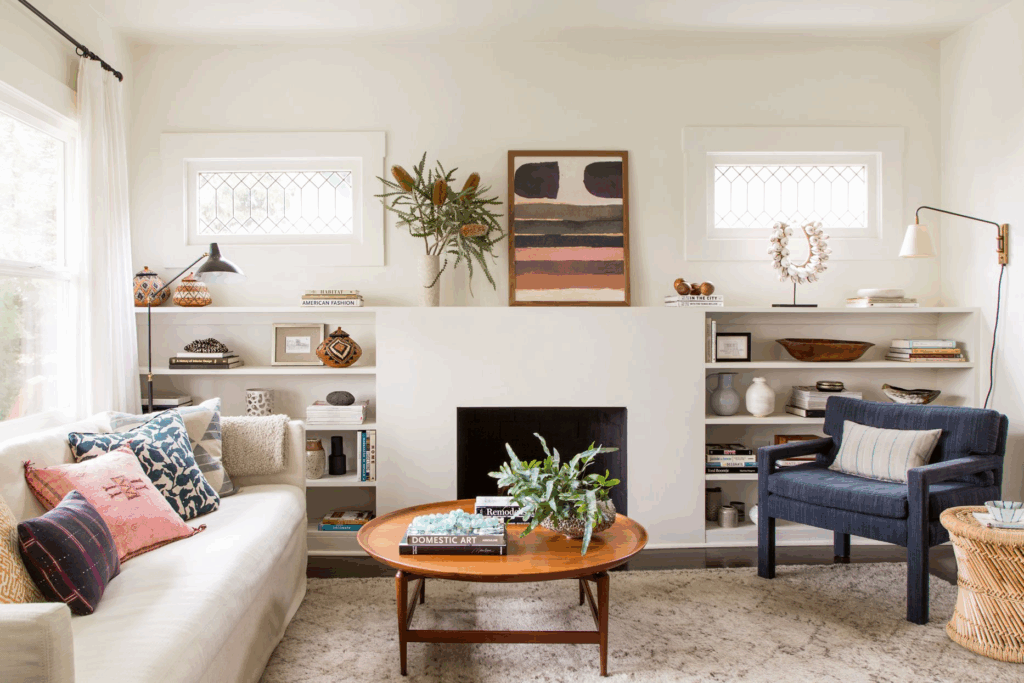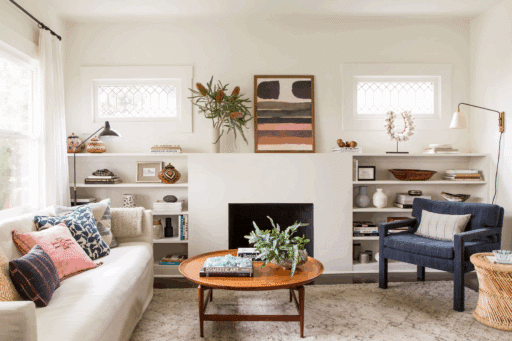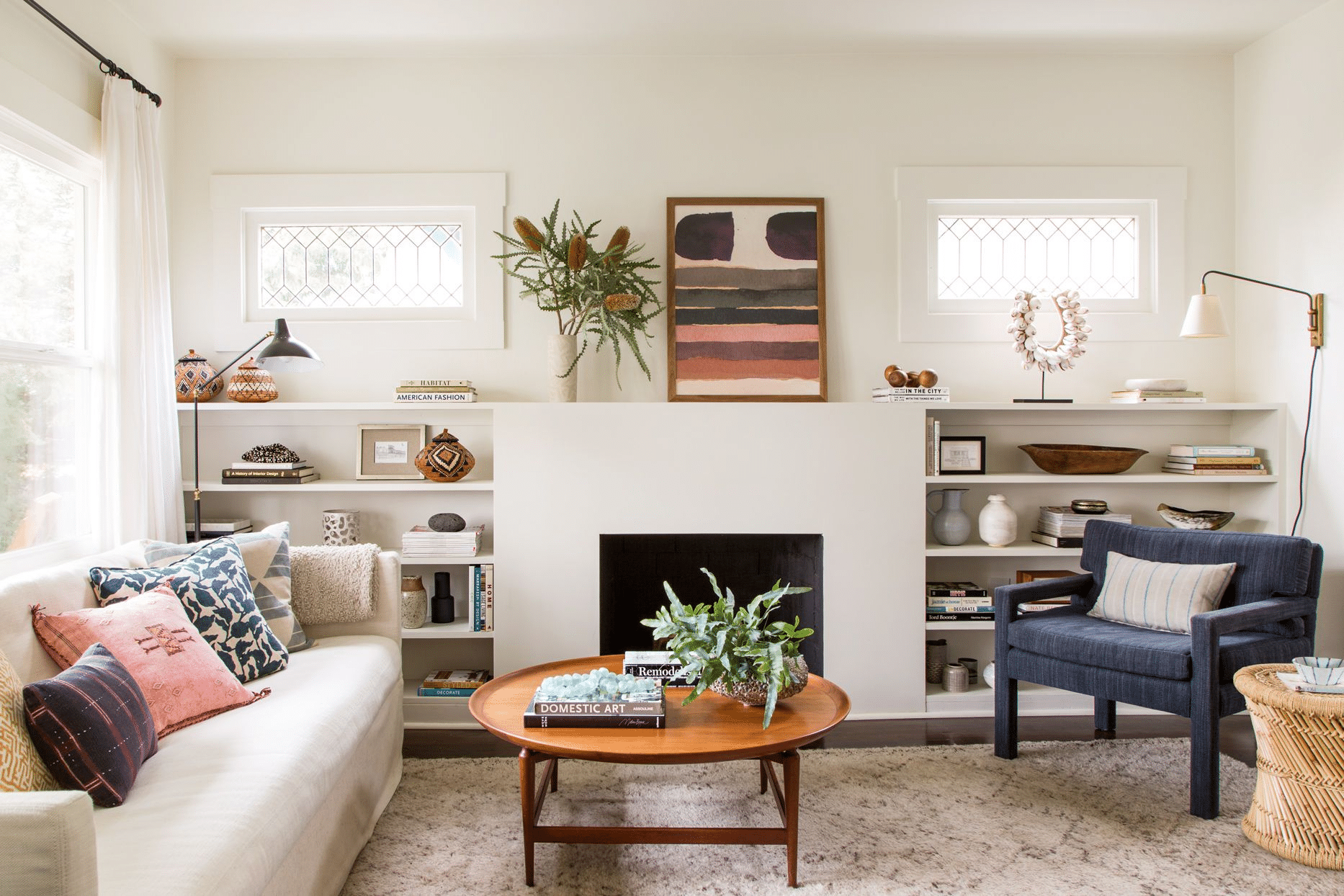Creating a living room that feels cohesive inviting and personal is an art and a science. The furniture you choose plays a central role in shaping the atmosphere of the room. When furniture complements the rest of your home décor the whole space reads as intentional and comfortable rather than thrown together.
This guide will walk you through practical design decisions and creative tips to help you match living room furniture with your home décor. Along the way you will learn how to balance colour materials scale and style so every element supports the others. If you need a place to shop consider buying living room furniture from Furniture in Fashion for a wide selection that works with many styles.
Understand Your Core Style
Before you buy anything identify the core aesthetic of your home. Is the overall tone modern classic traditional boho coastal industrial or eclectic? Knowing the dominant style will guide choices for shape scale and finish.
- Modern and contemporary homes value clean lines minimal ornament and functional pieces.
- Traditional spaces respond well to carved details rich wood finishes and more ornate shapes.
- Eclectic interiors welcome a mix of eras and textures as long as a unifying thread exists.
- Transitional rooms blend elements of contemporary and classic design so pieces can have character without being fussy.
Write down three words that describe your home such as calm relaxed bright elegant or playful. Use those words as your touchstone when selecting sofas chairs tables and storage.
Choose a Cohesive Colour Palette
Colour unites the room. When furniture ties into a clear palette the result is harmonious even when pieces differ in form.
- Start with a base colour for large items such as the sofa and rug. Neutral tones like beige grey cream or warm taupe give flexibility.
- Select two supporting colours to repeat in cushions throws and smaller furniture. These can be variations of the base or contrasting accents.
- Add a single bold accent colour for visual interest. Use it sparingly in accessories art or a statement chair.
If your home already uses certain hues in walls window treatments or adjacent rooms echoing those tones in your living room furniture will create flow. For example a warm wood coffee table reinforces golden or terracotta accents in neighbouring spaces.
Match Materials and Textures
Texture brings depth. When materials work together the room feels layered and intentional.
- Wood finishes should be balanced across the space. If you have a dominant oak dining table consider a sofa with wooden legs in a similar tone or a coffee table with complementary undertones.
- Metal finishes need coordination. Mixing polished chrome with satin brass can work but choose one finish to dominate to avoid visual clutter.
- Upholstery and textiles are opportunities to introduce texture. Velvet linen boucle and woven cotton can all coexist if their colours relate.
Think about how tactile surfaces will feel in daily life. Soft upholstery invites lounging while harder finishes perform well for high traffic families.
Consider Scale and Proportion
Scale is the silent rule that determines whether furniture looks right in a room. Too small and pieces feel lost. Too large and circulation suffers.
- Measure your room before shopping. Note wall lengths window positions and walking paths.
- Choose a sofa size that suits both the room and how you use it. A deep lounge sofa is comfortable for movie nights but can overwhelm a narrow living room.
- Balance a large sofa with proportionate side tables and a coffee table sized to allow 40 to 50 percent of the sofa length to be visible around it.
Plan negative space. Leaving breathing room around furniture makes an arrangement feel intentional and makes the room easier to navigate.
Mix Styles with Purpose
Mixing styles can produce a fresh lively interior when done with restraint.
- Use repetition as a unifying tool. Repeating a material a colour or a shape will tie disparate pieces together.
- Anchor an eclectic mix with one dominant piece such as a statement sofa or a large rug. Other items can play supporting roles.
- Use contrast to create focus. Pairing a contemporary sofa with a classic armchair creates tension that feels curated rather than clashing.
If you are aiming for a modern look incorporate at least one piece with clean lines and minimal detailing to prevent the space from feeling too busy.
Lighting and Accessories Are the Finishing Touch

- Layer light with ambient task and accent sources. A central ceiling lamp provides general light while floor lamps and table lamps create pockets of warmth.
- Use accessories to carry colour and texture across the room. Cushions throws art and vases are easy places to repeat your supporting colours.
- Mirrors and artwork can reflect and amplify the room palette tying furniture to wall treatments and other rooms.
Accessories are also a low commitment way to experiment. Swap cushions or a lamp to refresh the look without replacing large pieces.
Practical Layout Tips
How you arrange furniture strongly influences the perception of cohesion.
- Define conversation zones. Arrange seating so people face one another with a coffee table or ottoman as the focal point.
- Respect traffic flow. Leave clear paths to doors and key areas. Furniture that blocks movement will make the room feel awkward no matter how beautiful it is.
- Use rugs to anchor groups. Choose a rug large enough that at least the front legs of seating sit on it to avoid a floating disconnected feel.
If your living room opens to other areas such as a dining room echo key elements like shared tones or matching wood finishes to create smooth transitions.
Shopping Tips and Where to Buy
Selecting furniture is easier when you shop with a plan. Know which pieces you need the most and where you want to splurge.
- Prioritise the sofa since it is the largest visual element and the most used item. Invest in comfort and good construction.
- Consider versatile pieces. Storage sofas nest tables and movable ottomans make a room more functional.
- Try samples when possible. Fabric swatches will reveal how materials read in your natural light.
If you are shopping in the UK and want modern options try searching modern living room furniture UK when looking for contemporary designs that suit modern interiors. For a convenient curated selection consider buying living room furniture from Furniture in Fashion where you can find sofas chairs coffee tables and storage that work for a range of styles. Whether you want a soft minimalist look or a more layered aesthetic their collection helps you create a cohesive set up.
Budget Friendly Strategies
Cohesive design does not require high spend. Focus on three strategies to look expensive on a budget.
- Edit heavily. Fewer well chosen pieces look better than many mismatched items.
- Update textiles. New cushions throws and a rug can transform existing furniture.
- Mix investment and budget buys. Spend more on a durable sofa and save on occasional chairs or side tables that are easy to replace later.
Thrift and second hand shopping are excellent ways to find unique pieces that add personality without breaking the bank. Reupholstering an old chair can also extend its life and align it with your current palette.








